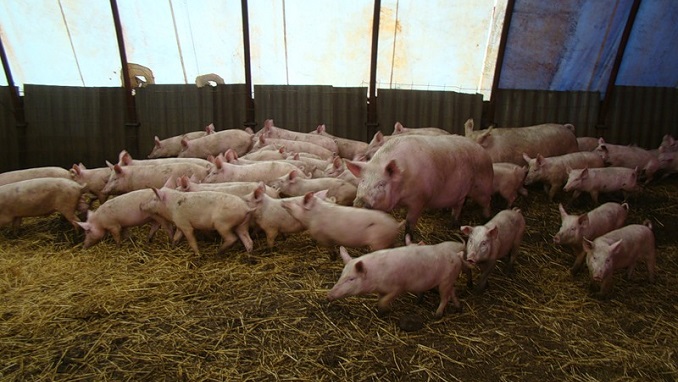The volume of meat production in Russia is on a sharp rise, data from Russia’s information-analytical agency EMEAT reveals.
The volume of meat production in the country (excluding backyard operations) reached 1281.9 thousand tons in slaughter weight during the period from January to February 2018, which is 10.7% or 55.7 thousand tons more than the same period of 2017, the agency said.
During the period from January to February 2018, pork accounted for 35.4%, poultry – for 57.8%, beef – for 6.7%, lamb and goat – for 0.1% of the total volume of industrial meat production.
The overall number of pigs in Russia increased by 5.8% (by 1.3 million head) during the year and amounted to 23.7 million heads by March 1, 2018. The number of pigs (excluding backyard operations) increased by 7.8% over the year (by 1,490,000 animals) and amounted to 20.7 million heads, the data shows.
The volume of pork production in Russia (excluding backyard operations) amounted to 453,600 tons in slaughter weight (618,900 tons in live weight) during the period from January to February 2018, which is 11.6 percent or 47.2 thousand tons more than the same period last year.
The rise of Russia’s meat production is attributed to the country’s need to ramp up domestic food production in the wake of U.S. and EU sanctions.
On Monday, Russia’s minister of agriculture Alexander Tkachev said he has supported a new bill that would authorize the federal government to end all Russia-U.S. trade in agriculture.
Tkachev revealed that Russian imports of agricultural products from the US were estimated at $300 million per year. According to the official, this figure only accounted for 1- 2% of Russia’s total agriculture imports and, in his opinion, the country will be able to replace that production on the domestic market.












